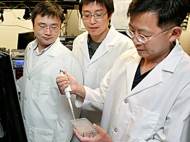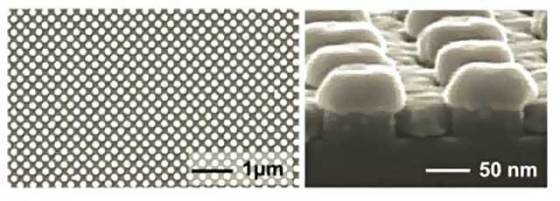Nanotechnology dramatically improves medical diagnosis
 Princeton University researchers developed a new nanomaterial which dramatically improves the sensitivity of immunoassays – a common medical test which mimics the action of the immune system to detect the presence of chemicals associated with diseases. According to researchers, their method increases the sensitivity over 3 million times more sensitive compared to other similar tests.
Princeton University researchers developed a new nanomaterial which dramatically improves the sensitivity of immunoassays – a common medical test which mimics the action of the immune system to detect the presence of chemicals associated with diseases. According to researchers, their method increases the sensitivity over 3 million times more sensitive compared to other similar tests.
The samples taken during tests for signs of some disease are mixed with immunoassay material which produces a fluorescent glow (light) if it reacts to chemicals associated with a disease (biomarkers). Unfortunately for early diagnosis, if the amount of biomarker is too small the fluorescent light is too faint to be measured when the glow is analyzed in a laboratory. Princeton researchers managed to amplify the faint fluorescence from a sample by creating minute glass and gold structures.
The researchers named this new artificial nanomaterial D2PA. D2PA consists out of a thin layer of gold nanostructures which surround glass pillars with only 60 nanometers in diameter. The pillars are spaced 200 nanometers apart and capped with a disk of gold on each pillar. The sides of each pillar are speckled with even tinier gold dots about 10 to 15 nanometers in diameter.
“This advance opens many new and exciting opportunities for immunoassays and other detectors, as well as in disease early detection and treatment”, said Stephen Chou, Princeton University Joseph C. Elgin Professor of Engineering, who led the research team. “Furthermore, the new assay is very easy to use, since for the person conducting the test, there will be no difference from the old one – they do the procedure in exactly the same way.”
Chou’s lab has been developing D2PA for several years. In their recent tests, the researchers measured an improvement in the detection limit from 0.9 nanomolars to 300 attomolars. This enables far better detection because the sample could contain 3 million times fewer biomarkers which could be detected in the same molar concentration. Aside great improvements in diagnosis precision, immunoassays are increasingly becoming used in drug discovery and other biological research. Chou hopes that D2PA will find even more wide application in areas such as chemistry and engineering, where light-emitting displays and solar energy harvesting require precise fluorescence measuring tests.
As next steps in his research, Chou said he is conducting tests to compare the sensitivity of the D2PA-enhanced immunoassay to a conventional immunoassay in detecting breast and prostate cancers. In addition he is collaborating with researchers at Memorial Sloan-Kettering Cancer Center in New York to develop tests to detect proteins associated with Alzheimer’s disease at a very early stage.
For more information, you can read the paper published in the journal Nanotechnology: “Giant and uniform fluorescence enhancement over large areas using plasmonic nanodots in 3D resonant cavity nanoantenna by nanoimprinting” [1.07MB PDF].










Leave your response!